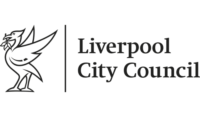Exploring the radical shift in the boundary between fiction and reality in a world increasingly governed by ‘post-truth’ politics.

How much of this is fiction. is an exhibition involving artists as tricksters and featuring work which involves the direct use of deception, tricks, hoaxes and hacks. These politically inspired media artists use trickery and deception to exploit the shifting boundary between fiction and reality in a world of ‘post-truth’ politics.
How much of this is fiction. focuses on politically inspired media art that uses deception in all its forms. At the heart of the exhibition is the desire to address one of today’s most urgent political issues: the radical shift in the boundary between fiction and reality in public discourse, in a world increasingly governed by ‘post-truth’ politics. How much of this is fiction. shows the artist as ‘dark jester’, as trickster, using a variety of hoaxes, hacks and ruses to reveal the hidden workings of power structures and the possibility of alternative futures.




As well as acting as a timely reflection on the nature of truth in a time filled with fake news, misinformation, and tactical propaganda, the show also serves a historical purpose. Many of the high-speed media interventions showcased in the show are, to a degree, legacies of ‘Tactical Media’; a cultural and political movement that flourished in the late 90s. Tactical Media was the first to combine the power of art, the practices of PR and advertising worlds, and an experimental approach to digital media, to mount hit-and-run interventions in the media sphere aiming to create chaos as a means of generating political opportunity.
The artists showcased as part of How much of this is fiction. are united in their underlying purpose of engaging with urgent social and political events. The show includes ambitious restagings of installation works by Maia Gusberti, !Mediengruppe Bitnik, and UBERMORGEN, as well as exciting new commissions by Morehshin Allahyari, HeHe, and artist-designer Ruben Pater. Invited on the basis of his own work within the realm of Tactical Media, Pater has produced a new graphic and spatial design for the exhibition. Grounded in a strong activist history (particularly relating to the ways in which the media covers moments of political unrest) and ideas of containment, his graphic design engages with themes of political protest, systems of control, and acts of obfuscation.
How much of this is fiction. shows how the influence of this media movement remains all around us. Whether it be the social media meme tactics of political extremists, the live streaming of police shootings to social and mainstream media platforms around the world, Trump’s midnight tweets, the exposure of the surveillance state through Snowden’s actions, or information unveiled by Wikileaks, it is clear that the critical role of “do it yourself” media politics is as crucial as ever.
How much of this is fiction. is curated David Garcia and Annet Dekker, in collaboration with Ian Alan Paul (Director, Guantanamo Bay Museum of Art and History).
Daily Paywall
Printed materials; looped single channel videos (various durations); newspaper; takedown letter
by Paolo Cirio
Guantanamo Bay Museum of Art and History
Exhibition Framework; installation; marketing materials
Material Speculation: ISIS
Installation with 3D objects and downloadable content; workshops and residency
Homeland Is Not A Series
Single channel video with audio (7:15 mins); photography
Delivery for Mr. Assange
Installation environment; two-channel video with sound (10:01 mins.)
Torture Classics
Interrogation box with handpainted sign; single channel video with sound (9.47 mins)
by UBERMORGEN
Zone*Interdite
3D walkthrough via three-channel video; interaction station with website
Artists
Supporters










Be inspired
Stay in touch
Join our mailing list and get the latest news about exhibitions, events, cinema highlights and opportunities sent to your inbox.
Sign me up
















